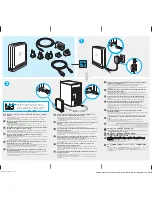
User’s Guide
VU Meter (Volume Unit Meter)
VU Meters (expanded view)
Probably the fi rst audio measurement that many of us learned is the familiar VU
meter that we equate with distortion overload. The VU Meter is actually defi ned by
a specifi c set of attributes and response characteristics known as ballistics, which
estimate the loudness of a signal based on the ear’s ability to compress intensity
differences and downplay transient peaks. The VU meter represents a commonly ac-
cepted compromise of what our ear does naturally. Pro Audio Lab’s VU meters read
average level but ignore the instantaneous peaks that are the job of the Peak Level
Meters. The VU meters offer an accurate volume measurement that lets you judge
the levels of your program. There is often a 12 dB difference between peak level and
the level indicated by the VU meters. A VU meter is designed to have a relatively
slow response. It is driven from a full-wave averaging circuit defi ned to reach 99%
full-scale defl ection in 300 ms and overshoot not less than 1% and not more than
1.5%. The VU meter is calibrated to display 0 VU for a sine wave at 0 dBFS.
Loudness (A-Weighted Level)
Loudness /A-Weighted Level (expanded view)
Loudness is a measurement that uses fi ltering from the A-Weighted curve to cre-
ate the best average representation of what our ear perceives as loud at different
frequencies. The term “A-Weighted” refers to particular plotted curve that ranges
from –45 dB to +3 dB with a frequency range of 20 Hz to 10 kHz. This curve is an
approximate but accepted standard measurement based on averaging statistics from
the equal loudness contour graph. This type of audio measurement is very useful in
determining what volume levels need to be applied to two separate mono channels or
to the left/right of a stereo channel. For example, say you have two matching guitar
parts that have been recorded on separate tracks. Using the Loudness meter, you
can clearly see how the two channels compare and where you need to compensate to
achieve a loudness balance. Another useful application is using the meters on Master
L and R outputs to achieve a desired volume.














































